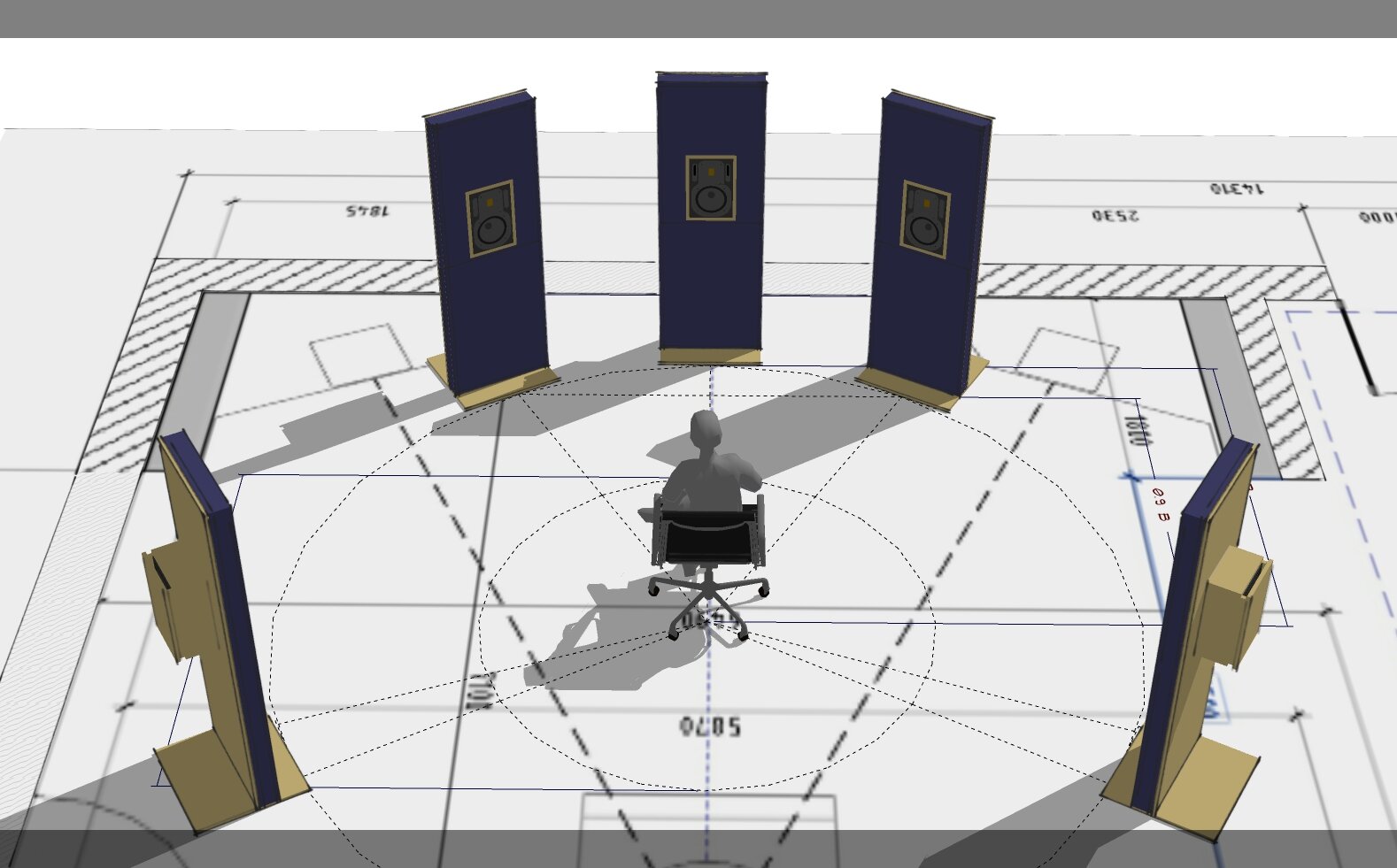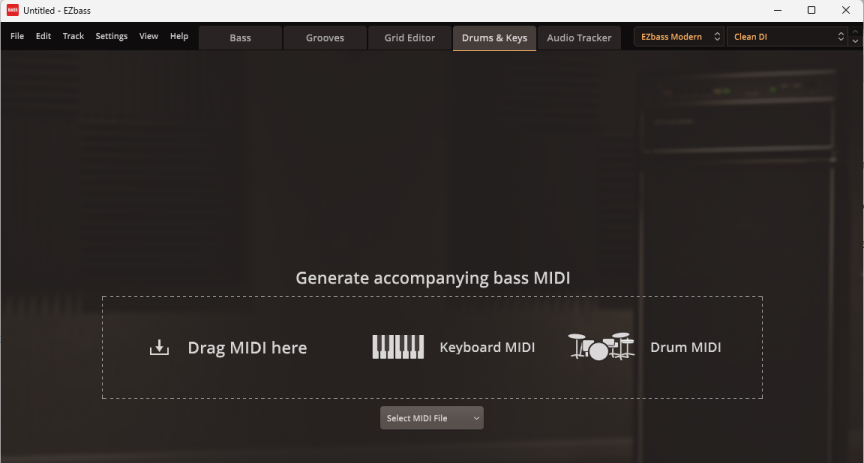-
Posts
2,301 -
Joined
-
Last visited
Everything posted by Glenn Stanton
-
i think the main challenge was the lack of marketing people coming on the forum to explain their approach vs the developers who don't control the marketing and sales aspect...
-
no, pretty sure "early access" was to give folks a discount on the Bandlab Membership and obtain an early Sonar release...
-
i find that skipping two or three starbucks coffees per month pays for my bandlab membership. i didn't find the time to stress over it and sure as heck wasn't going to another DAW because of it.
-
maybe provide a reference to the post where Bandlab or the Cakewalk team articulated there WILL be a perpetual license? perpetual licenses are a thing of the past. Studio One for example, claims to have a perpetual license. all you have to do is buy the new version every year LOL.
-
i would start with the 2019 drivers first and see if that solves it. if nvidia has a compatibilty checker, then maybe it would be wise to run that before installer later drivers. on my HP laptop, it has fairly new nvidia hw, but the install of updated drivers last year took some experimentation to get them working as the nvidia site wasn't exactly clear on which ones to use...
-

Why am I being forced to sign in with Facebook?
Glenn Stanton replied to Xel Ohh's topic in Cakewalk Sonar
you must have missed the recent election - we drove those people out of office and are trying to correct things. remember, no one is above the law. even judges, mayors, congress critters etc. cheers! -

Why am I being forced to sign in with Facebook?
Glenn Stanton replied to Xel Ohh's topic in Cakewalk Sonar
makes sense then why its a misogynistic women-rating college-perv website that turned into a spam-bot echo machine... -

Why am I being forced to sign in with Facebook?
Glenn Stanton replied to Xel Ohh's topic in Cakewalk Sonar
"facebook"? isn't that the misogynistic women-rating college-perv website that turned into a spam-bot echo machine? -
also - make sure you're not opening files from a cloud service (Google, OneDrive, DropBox etc) file directory, and you have the anti-virus (e.g. Defender) and search exceptions setup to avoid your AV and indexing from trying to scan your files when you open them. these types of services tend to be aggressive in competing for the file even if they're not blocking it, the file handles can be prioritized causing delays (and worse file corruption).
-

Cakewalk Sonar crashing repeatedly for months now
Glenn Stanton replied to ccondon23's topic in Cakewalk Sonar
note that fabfilter Q3 has been crashing my PC a lot (a few months back). so, after lots of troubleshooting plugins, i stopped using it. no crashes. and sadly, no further updates from the fabfilter folks either. just lots of ads for Q4. -

Cannot write file - disk may be full (but it isn't)
Glenn Stanton replied to profwacko's topic in Cakewalk Sonar
i use a separate drive for my cloud services and file downloads, then use freefile sync to update the "cloud drive" from my selected local folders. turn off AV for the audio, video, CAD programs and files. OneDrive and Google Drive cannot interfere with my local files (except for the documents folder un onedrive but that's seldom a concern for me) using this approach and i have 3 location for backups - primary, cloud drive, and cloud. the sync process only take a few minutes to run (except when i have to update arturia pro content, groan). -
in theory, you could already use VI like Toontrack EZ Bass which has MIDI input from keys (or MIDI guitar) and drums to create accompanyment... also the TT Audio Sender plugin let's you send audio to the EZ Bass Audio Tracker input. combined with a decent library of styles and instruments, this might be worth looking into. i use it to create basslines by creating the song in the standalone app, use the libraries to select what i like foro a given section, then export the MIDI for use in the DAW.
-
one thing to do on any laptop, if you're not dependent on being live on the internet while mixing, is simply go to airplane mode. this will reduce a significant number of things contributing to the latency mess. i have an HP Victus gaming laptop - W11 - added some ram and ssds - almost never need to go into airplane mode unless i've decided to keep my synths unfrozen or using Waves Abbey Road Chambers (one of the biggest pigs on the planet but also really nice for some thing...) my buddy just got a Lenovo laptop a bit faster than mine (its newer) and added ram and connected some ssd. lightening fast running W11, CbB, and many photo and video apps. net-net -- most modern laptops can be used for many projects - even without "optimizations" (beyond turning a few things off) and getting used to using the airplane mode can alleviate those cases where you need the latency impacting network stuff out of the way.
-

... but perpetual licence ... are you considering it ?
Glenn Stanton replied to EnglandBross's topic in Cakewalk Sonar
yesssss. but is the horse tender and sweet? my precioussss -

... but perpetual licence ... are you considering it ?
Glenn Stanton replied to EnglandBross's topic in Cakewalk Sonar
well Studio One has the answer - apparently you pay every time they upgrade versions 5 to 6, 6 to 7 etc and since they upgrade every 9-12 months, it's practically a subscription, but you can keep the older version as long as you like, just no more updates etc. from a user perspective a subscription model seems onerous, from a dev perspective it means i cna continue to pay my people and keep deveoping the product and maintaining it. maybe the right approach is - when you cancel your subscription, you get to keep whatever version you are at when you cancel. no more updates (except maybe catastrophic bugs). -
yeah, rammap is one of many great tools in sysinternals originally created by Mark Russinovich from MS (not just a genius but also a really nice person). using the autostart as admin to cleanup all kinds of misc things that run on your machine, as well as rammap, process explorer, and many more you can keep your machine running clean as well as troubleshoot it. https://learn.microsoft.com/en-us/sysinternals/
-

Copying effects from one track to another.
Glenn Stanton replied to Andrey_rbk's topic in Cakewalk Sonar
for me - i use the Pro Channel to create presets - and using the FX chain to stack plugins. then just load the presets on each track and tweak as needed. i create them for different instruments, busses, etc. and as i update things i simply save as a new preset or overwrite an existing one, and later if i have a project which would benefit from the updated, i reload it into the project. voila! -
you would also need to set up some level of hardware cerification otherwise you'll swamped writing (and re-writing) hardware drivers.
-
i think will will be interesting - i don't have an active ARM64 device i would use either testing or otherwise, but i think if it becomes stable on ARM64 i'd likely find a reason to get a more modern device 🙂
-

Cakewalk by Bandlab crashes when I load the TH3-64 VST3 plugin onto a track.
Glenn Stanton replied to Testikoff's question in Q&A
as a best practice - keep programs on the OS drive as many of them seem to want to be on the C:\ drive, and feel free to relocate "content" (samples, audio, etc) to another drive to save space, being cognizant of paths to the content - some programs do not like content to be anywhere except the C:\ drive even if you can use a directory junction (e.g. Waves feels like they've hard coded it, other easy peasy), and some programs need a configuration change to point to the content (e.g. Kontakt libraries etc usually just need some configuration love). in this case - i'd sort out your content location strategy and put content there, no programs - example - the VST3 programs should be on the C:\ drive in 99% of the cases because of what i mentioned about apps. so i'd look into other sources that consume too much space which are not programs and move those. secondly, i'd reinstall the TH3 program since something broke and trying to piecemeal it back together is a waste of time... as a final note - too many developers like to put their stuff into the program data folder (looser permissions) or worse, the public user folder (like SampleTank), and even worse your documents folder!. so pay attention to those locations... also get into a routine of cleaning up temp files, update backups etc etc which can eat up space. -
you probably need to spend some time manually entering any delay compensation needed - find whichever source (mix or drums) is the longest and align the others to that. the physical connections (and presuming the mixer doesn't have some LCR networks causing weirdness) should have more than microseconds of delays (analog).
-
i found that simplifying the chords used and/or having chords span over several chord changes let's the solo generator produce smoother soloing rather than trying to create bits on each chord. for example, if there are 5 chord changes over two bars, i'll see if i can get an approximation using just 2 or 3 chords, and removing things like 7th 9th b13 etc (unless i am looking for more jazzy solo) 🙂
-
i use BIAB real tracks to generate solos - i'll create a project with the chord changes for the solo section(s) and an approximate style (or sometimes a wholly different one) and rerun the solo generate over and over until i get a performance i like (much like a session where it's being created by the player on the fly) then solo the solo track and export it. guitars and sax seem to work pretty well, many others are not so great. i don't use the MIDI because it never sounds authenticate, and converting it to MIDI is very seldom something i would do either.
-
for content and backups, a plain old HD can be useful - especially if you optimize the formatting for the sector sizes etc. definitely would want an SSD for OS and project disks though. $400 for the HD and install? you could get an external SSD for half that and a HD for about 1/4 of that...








